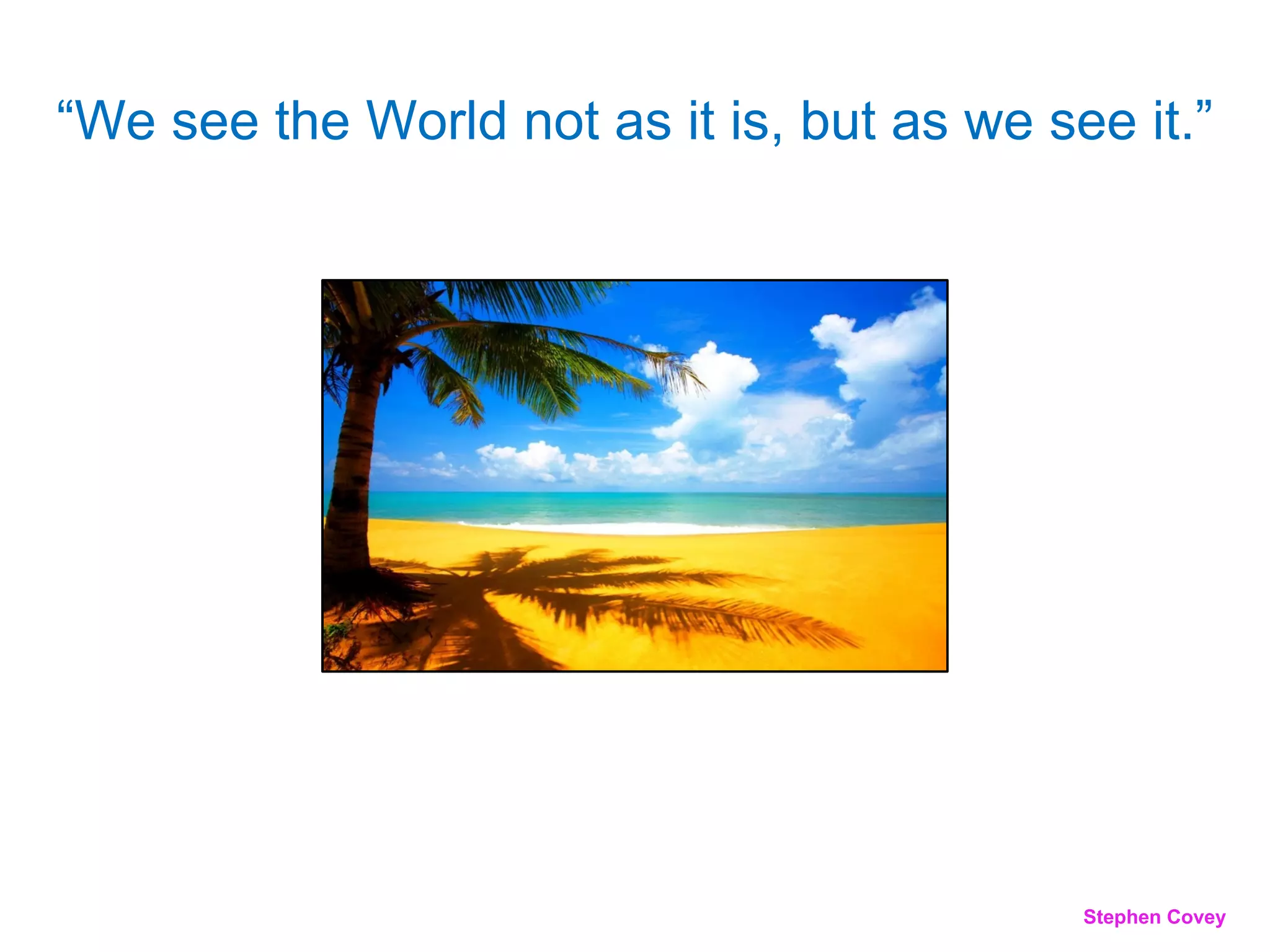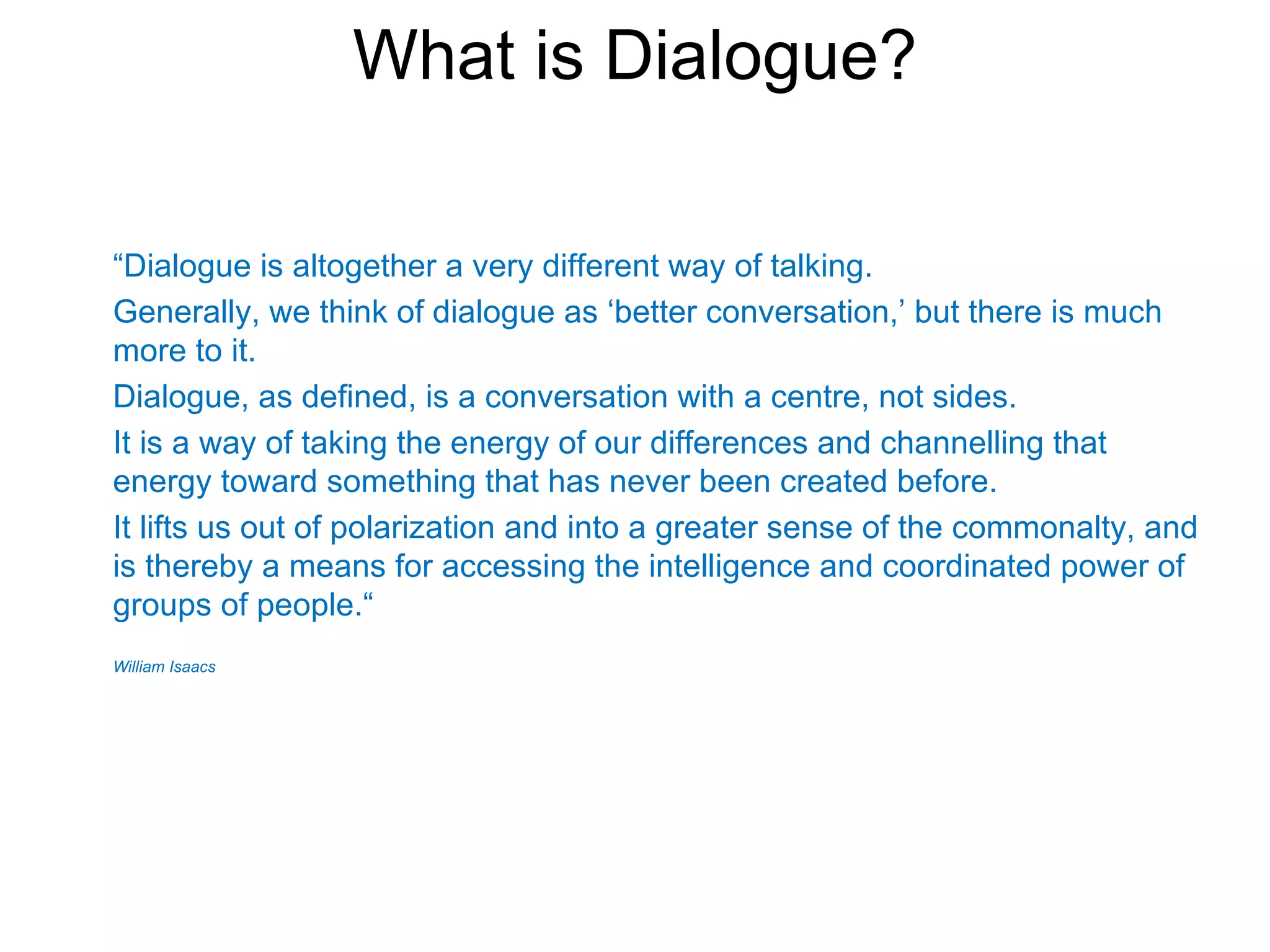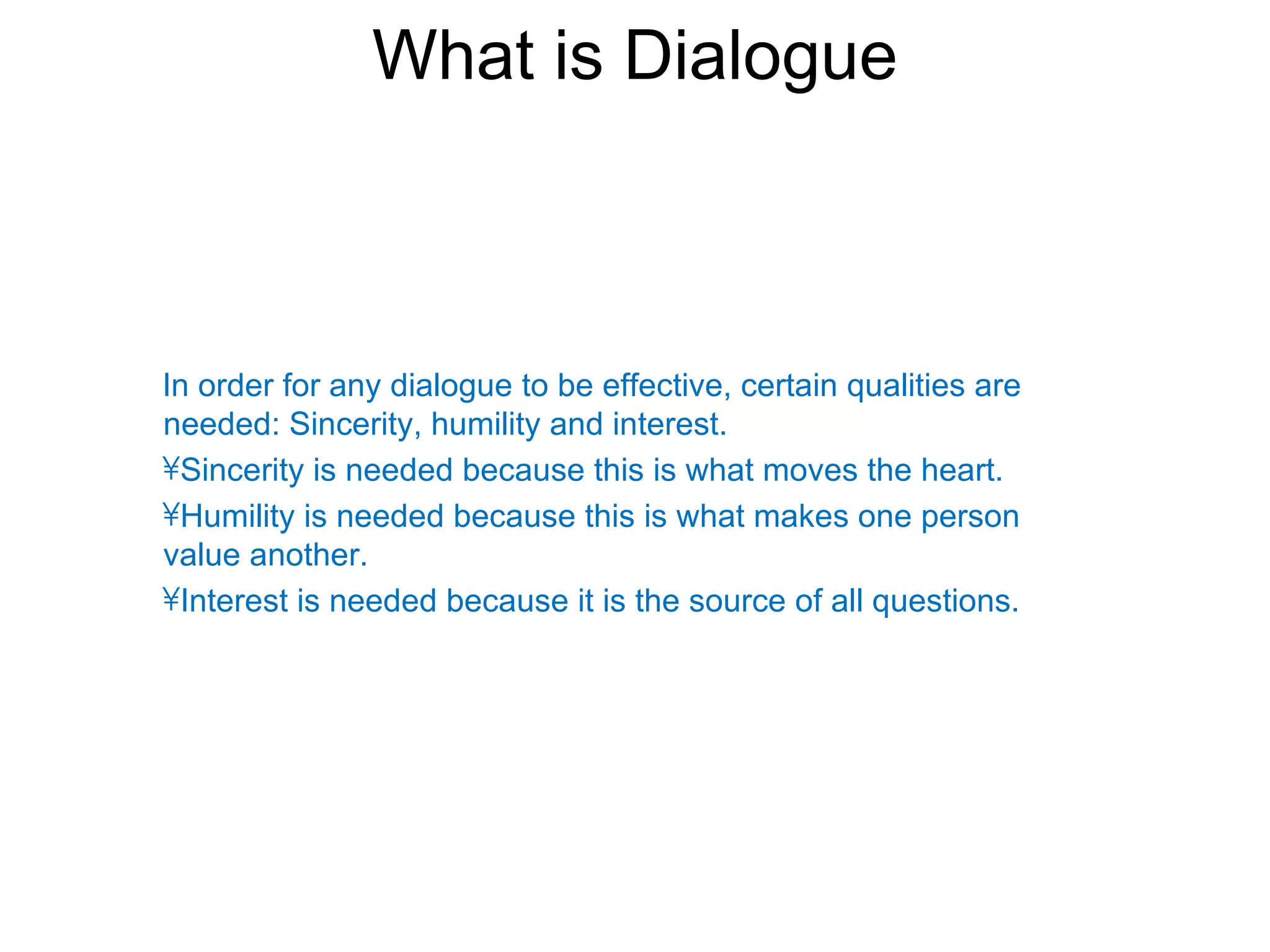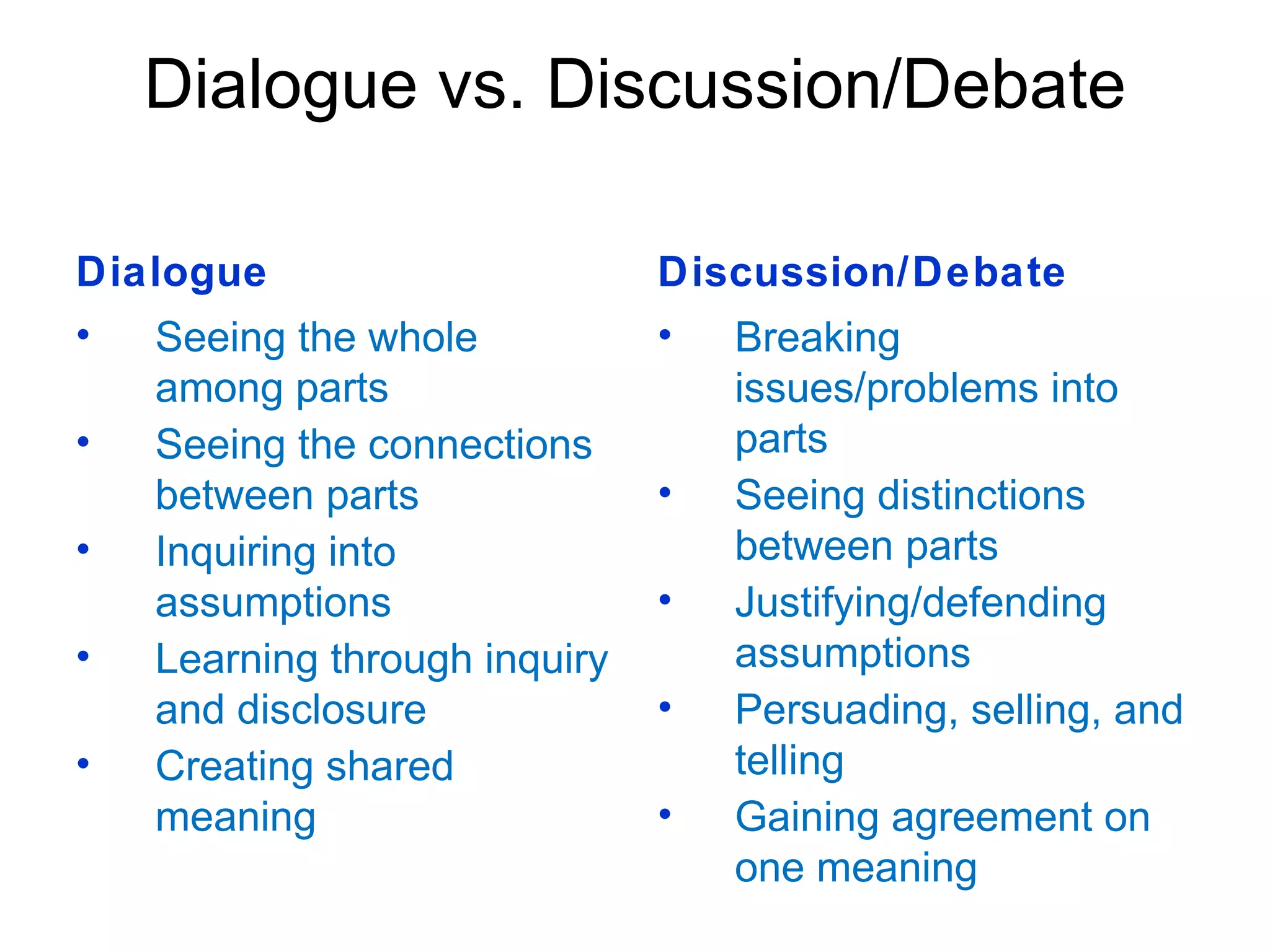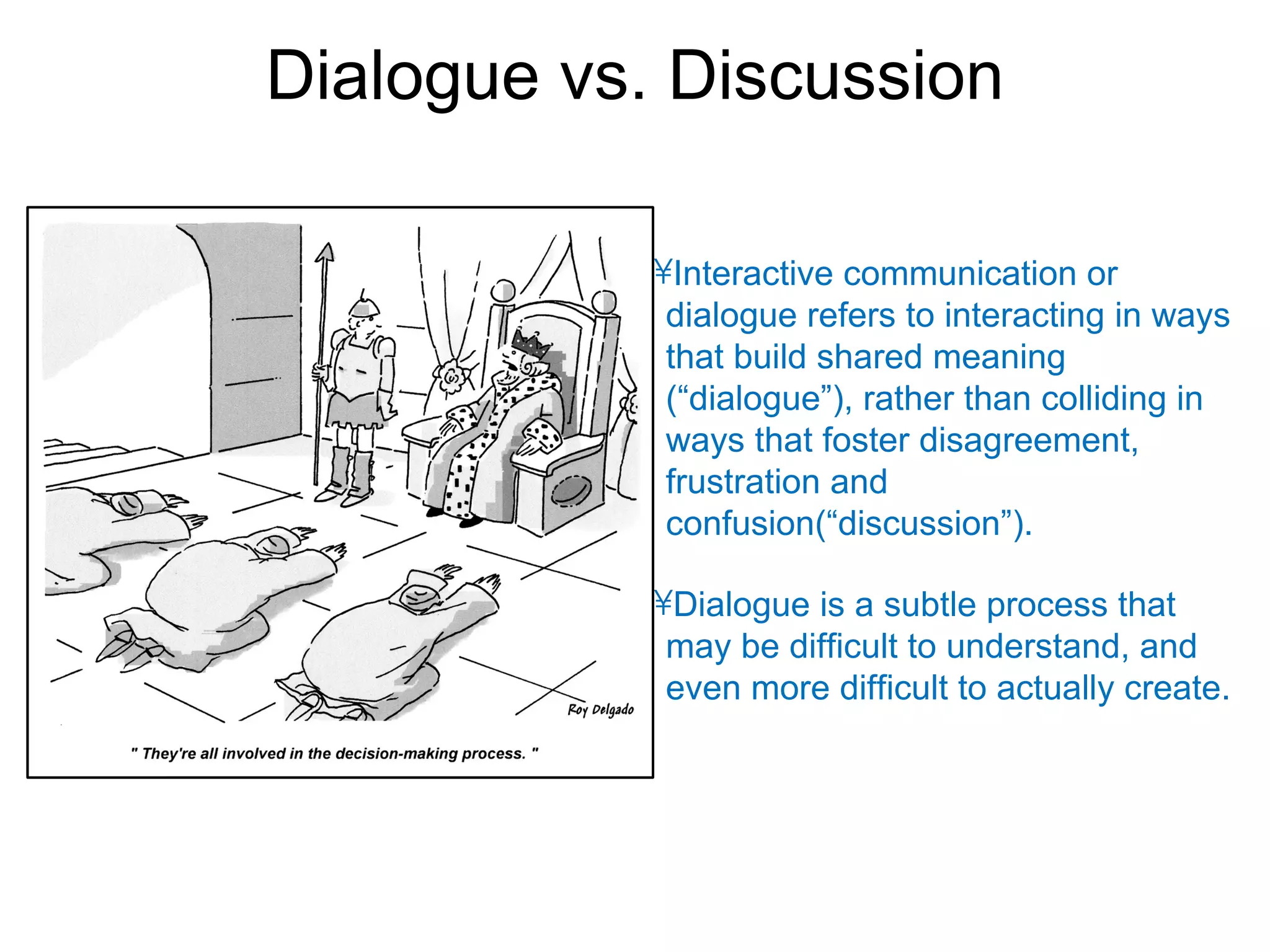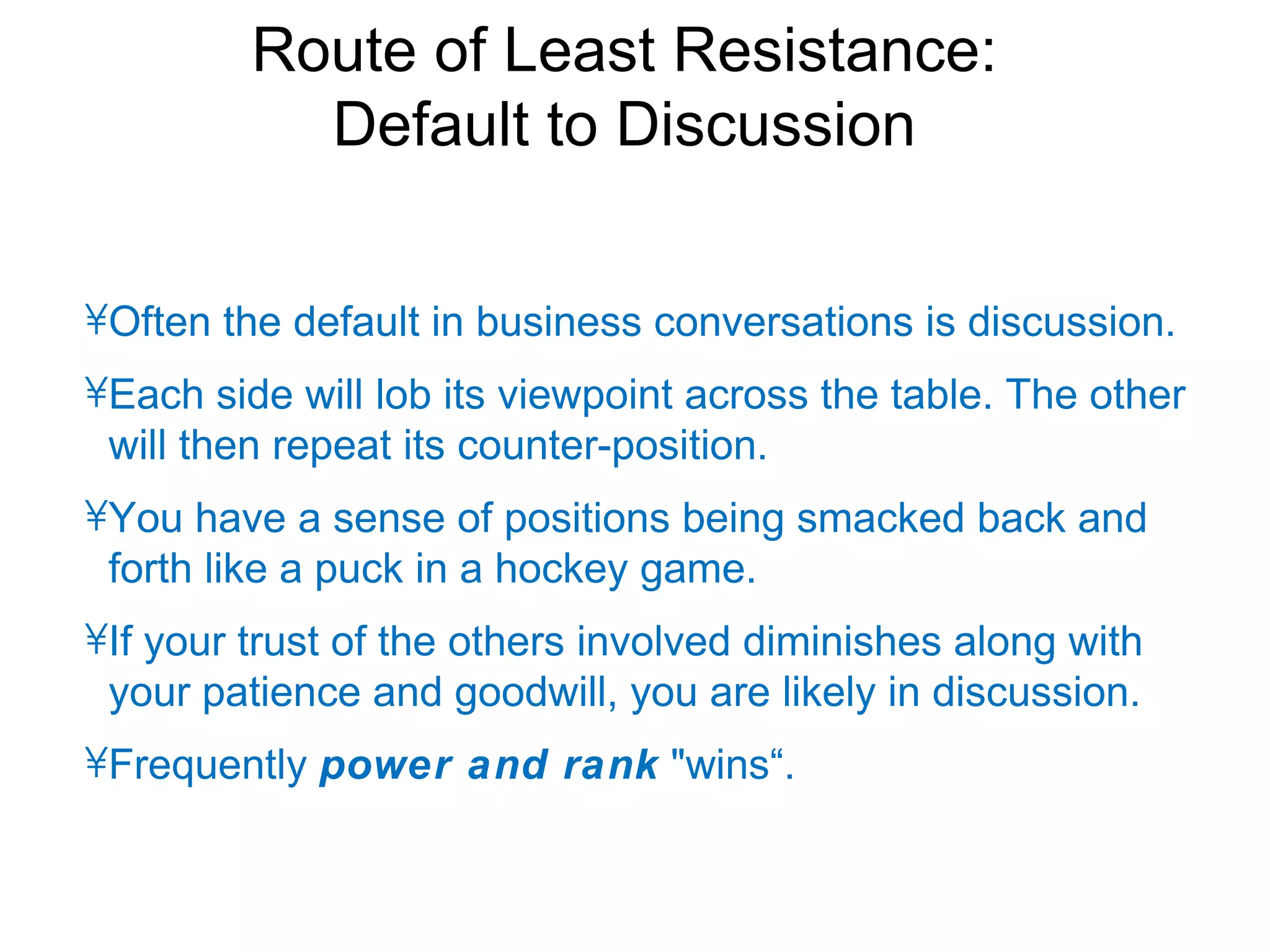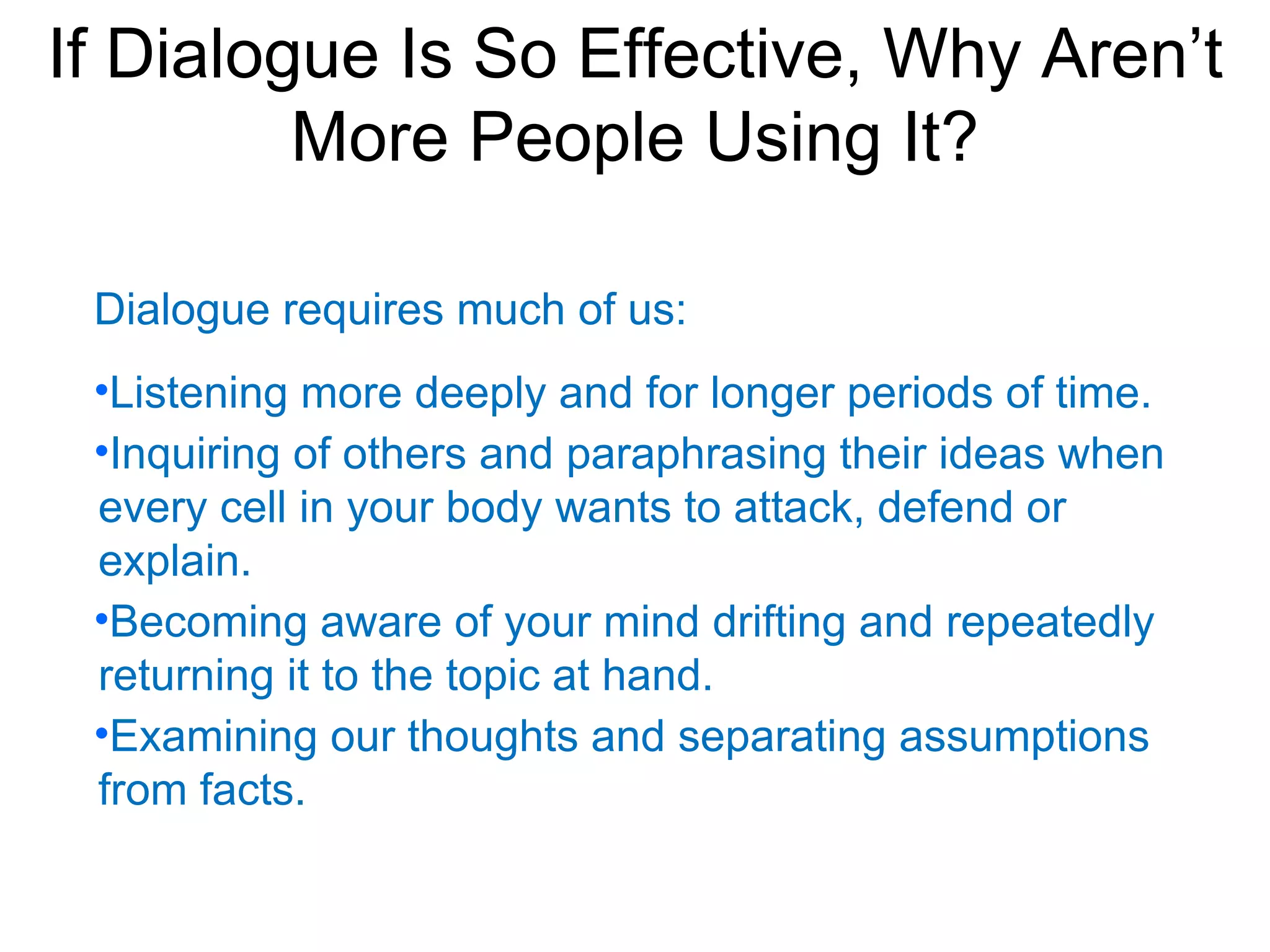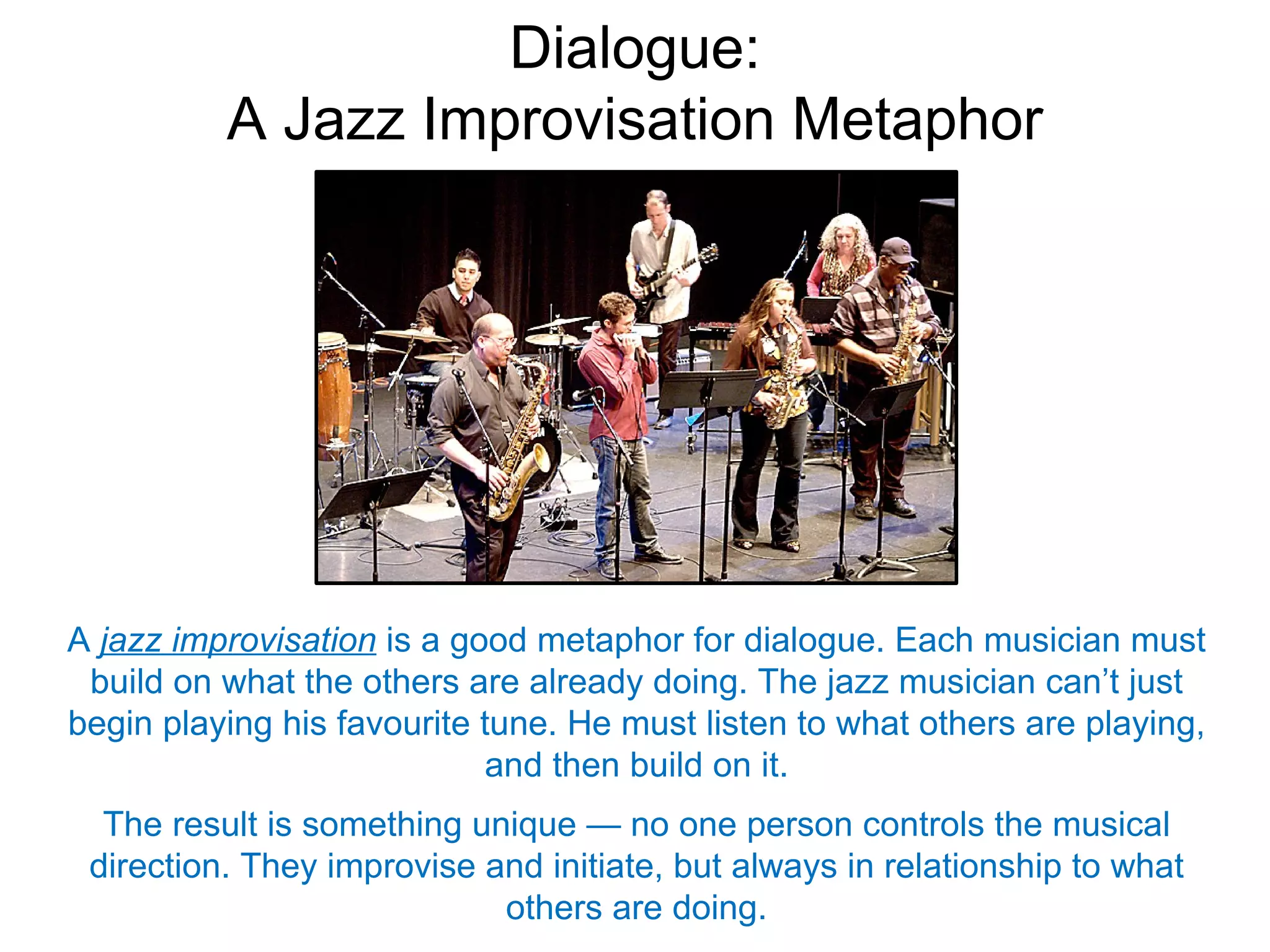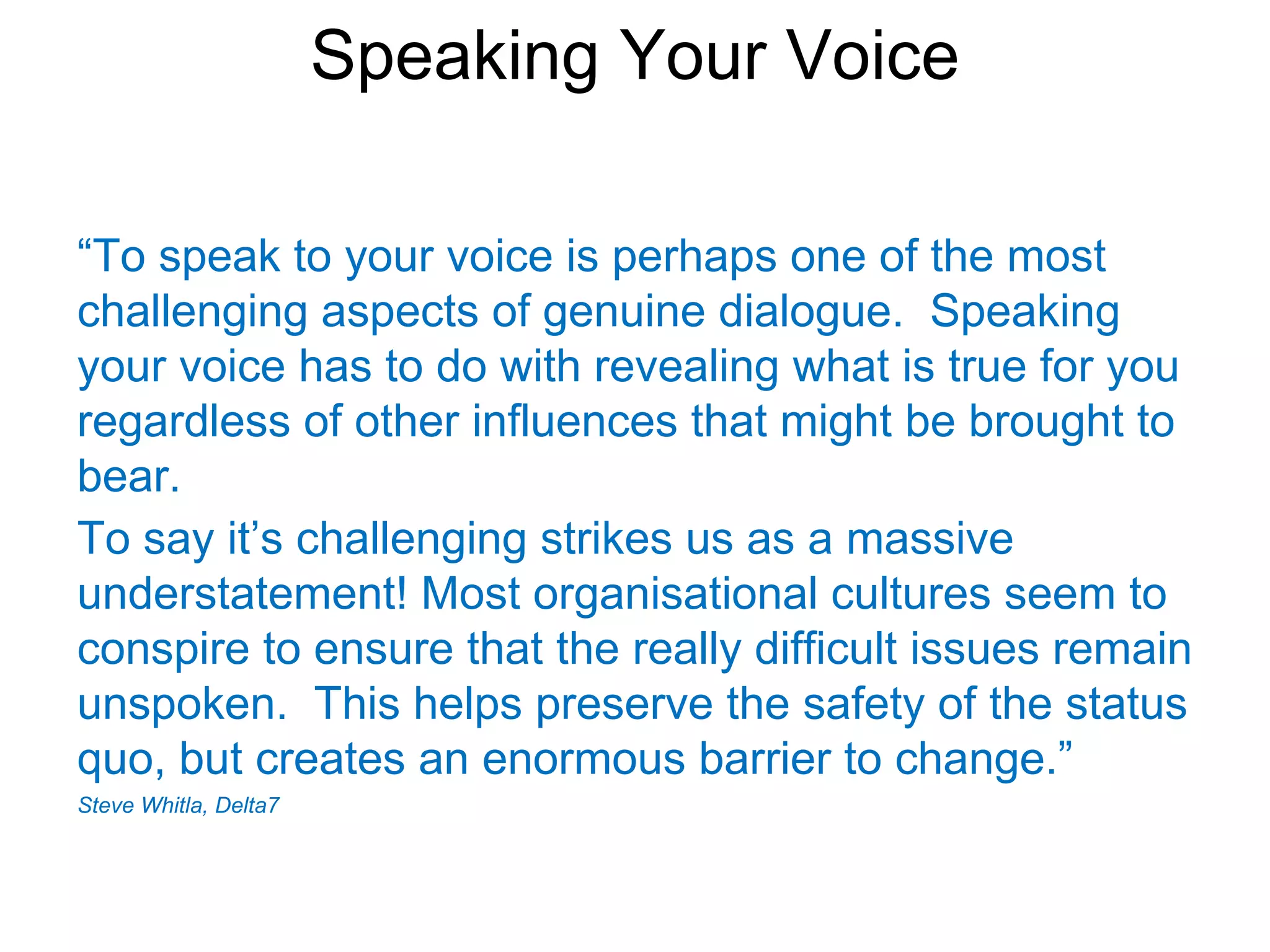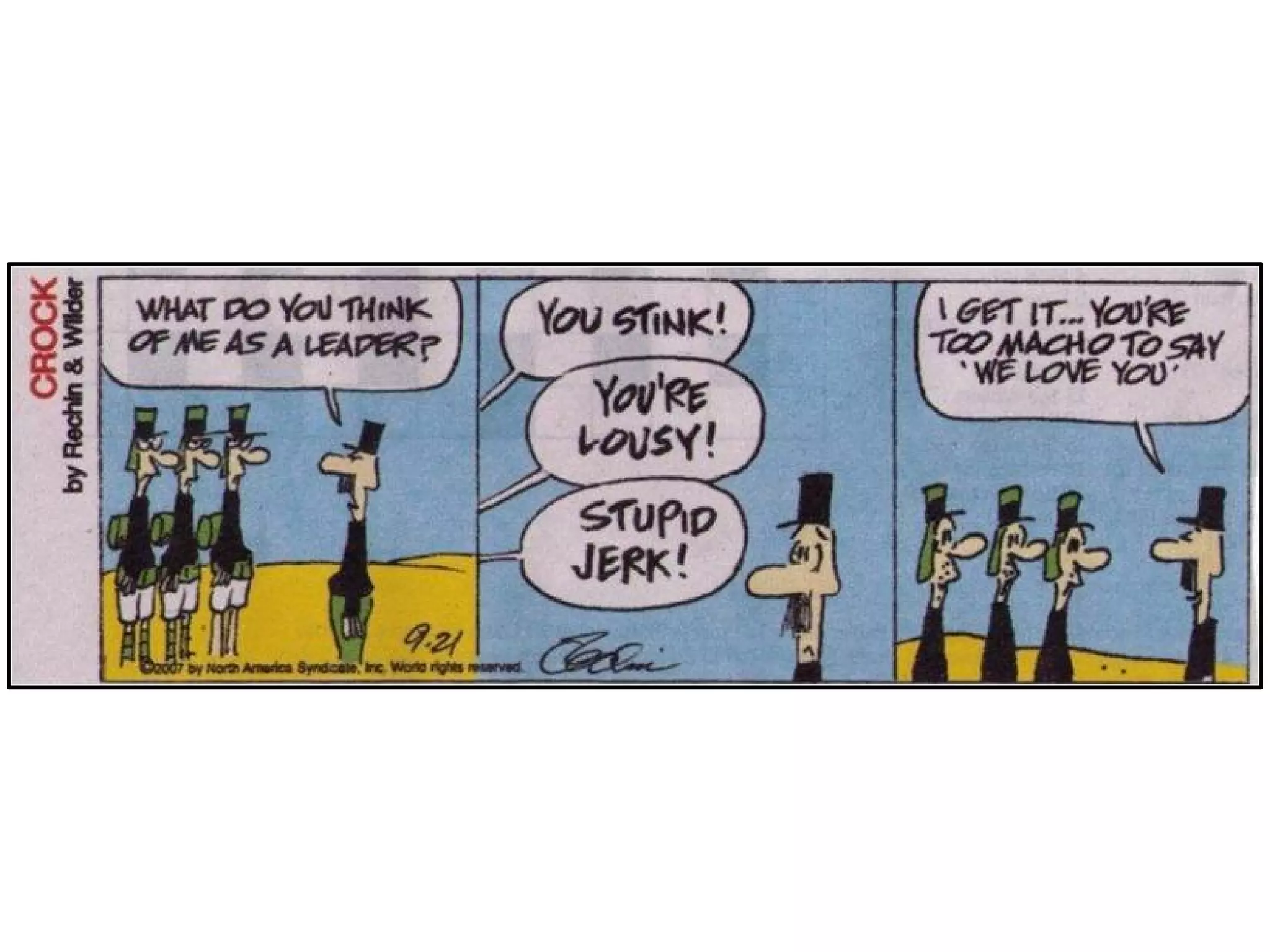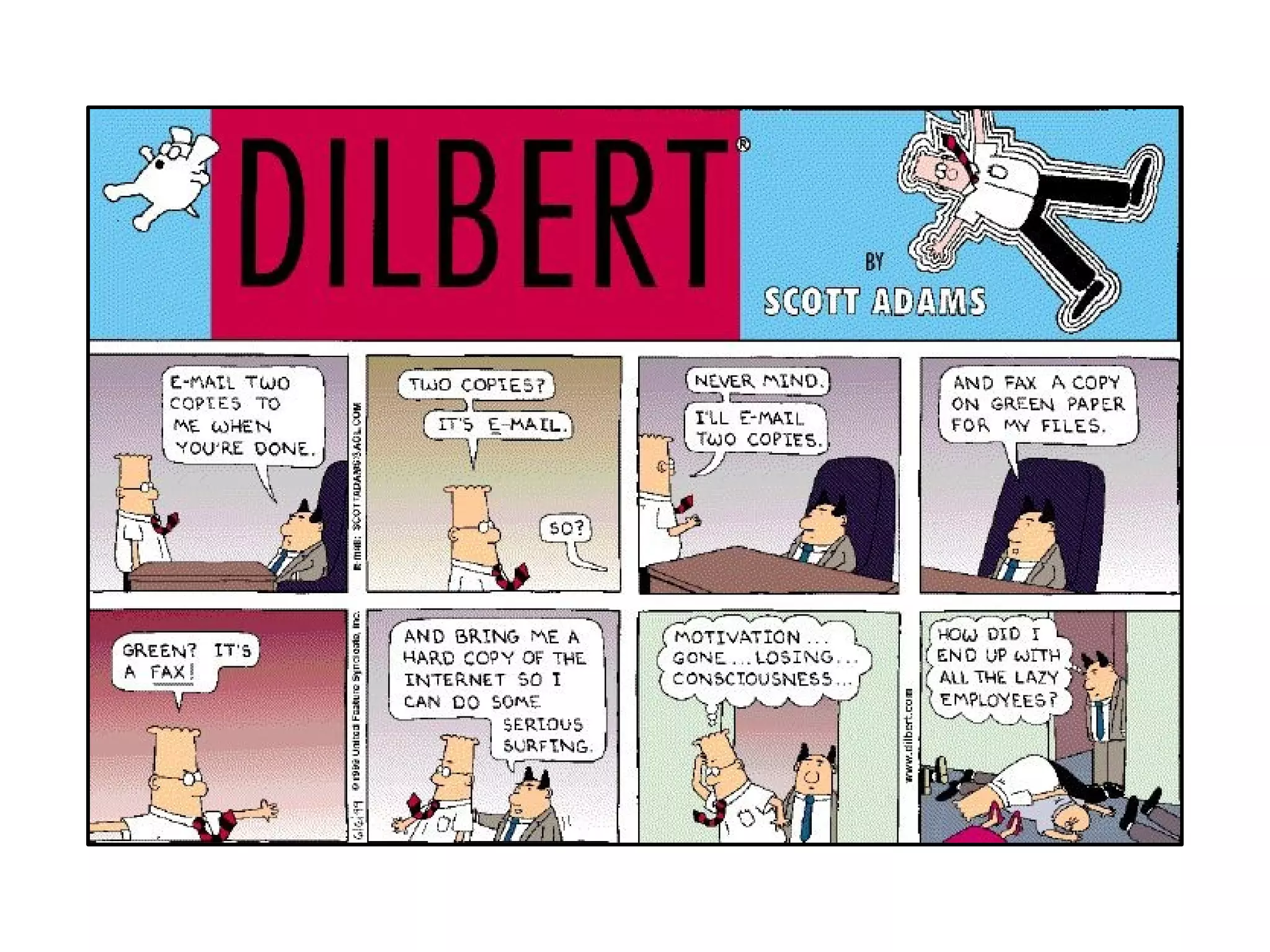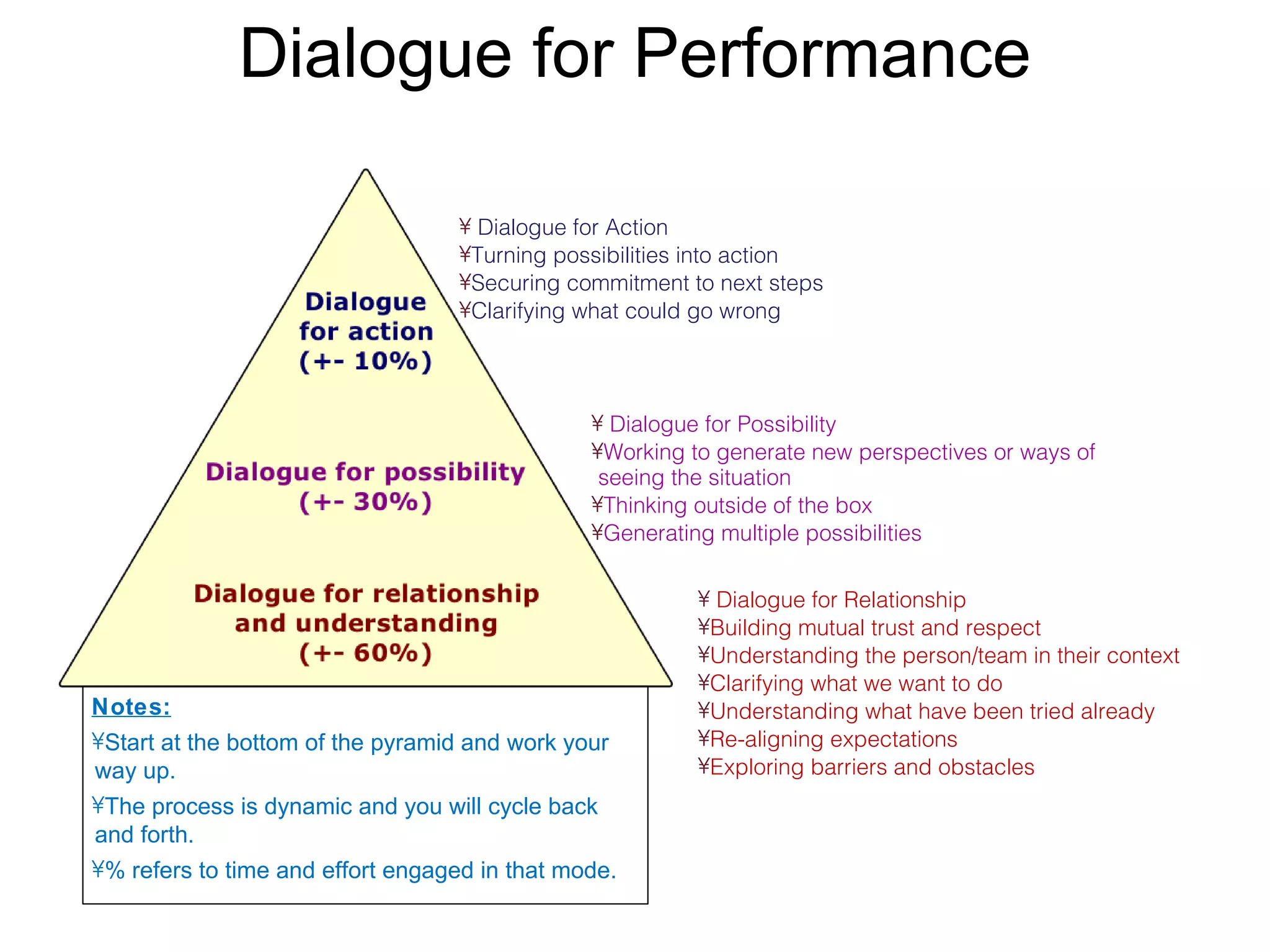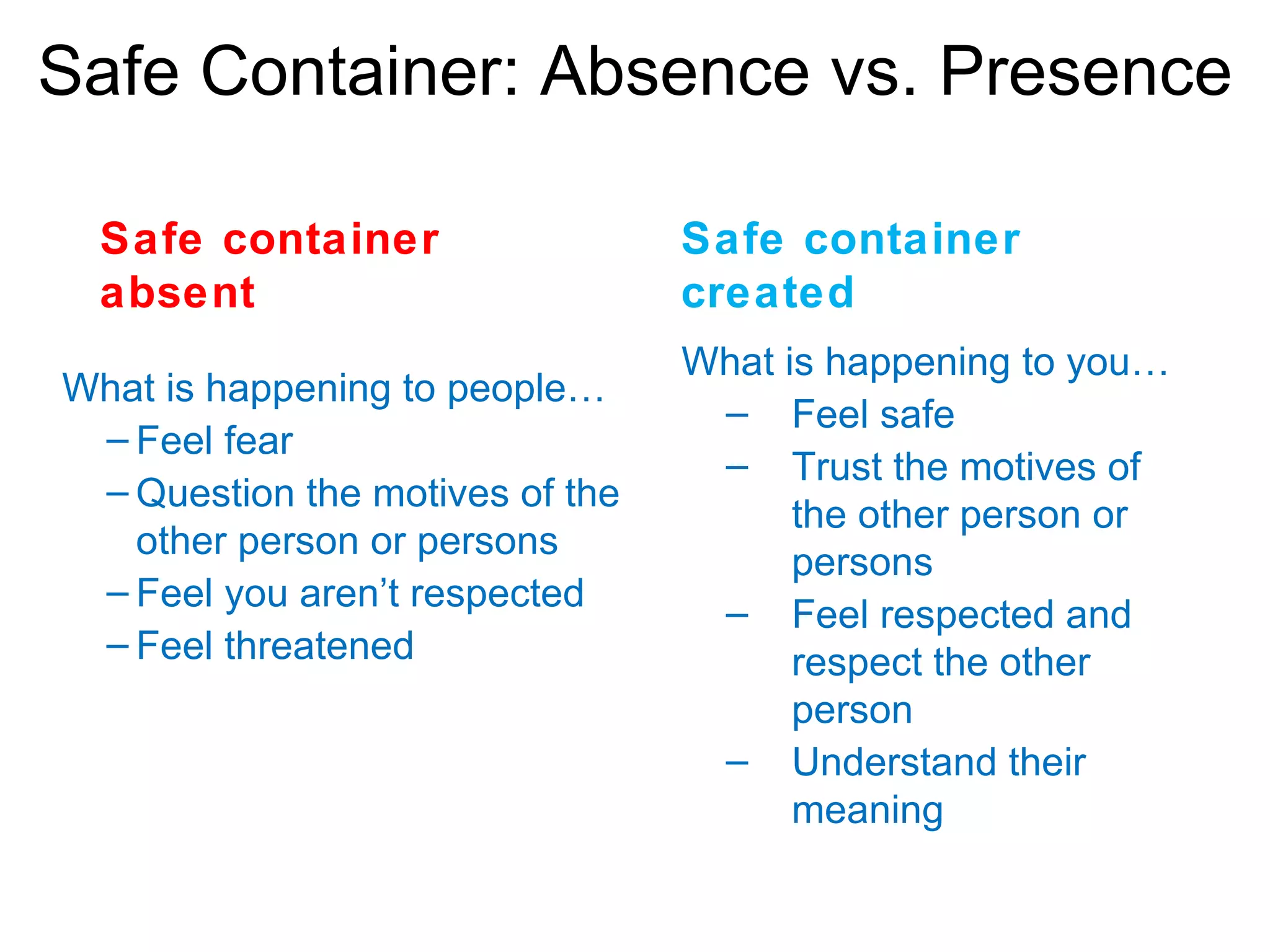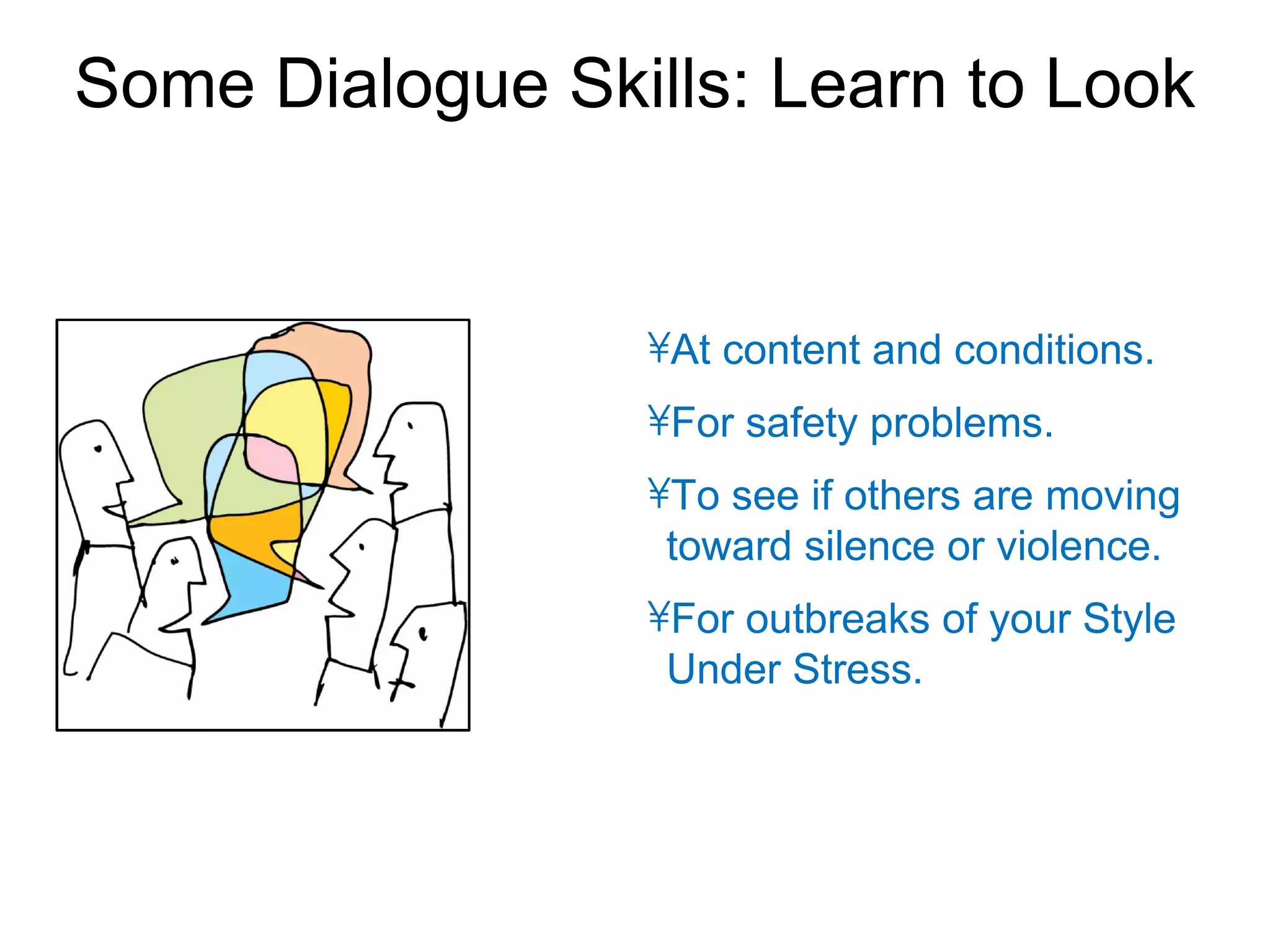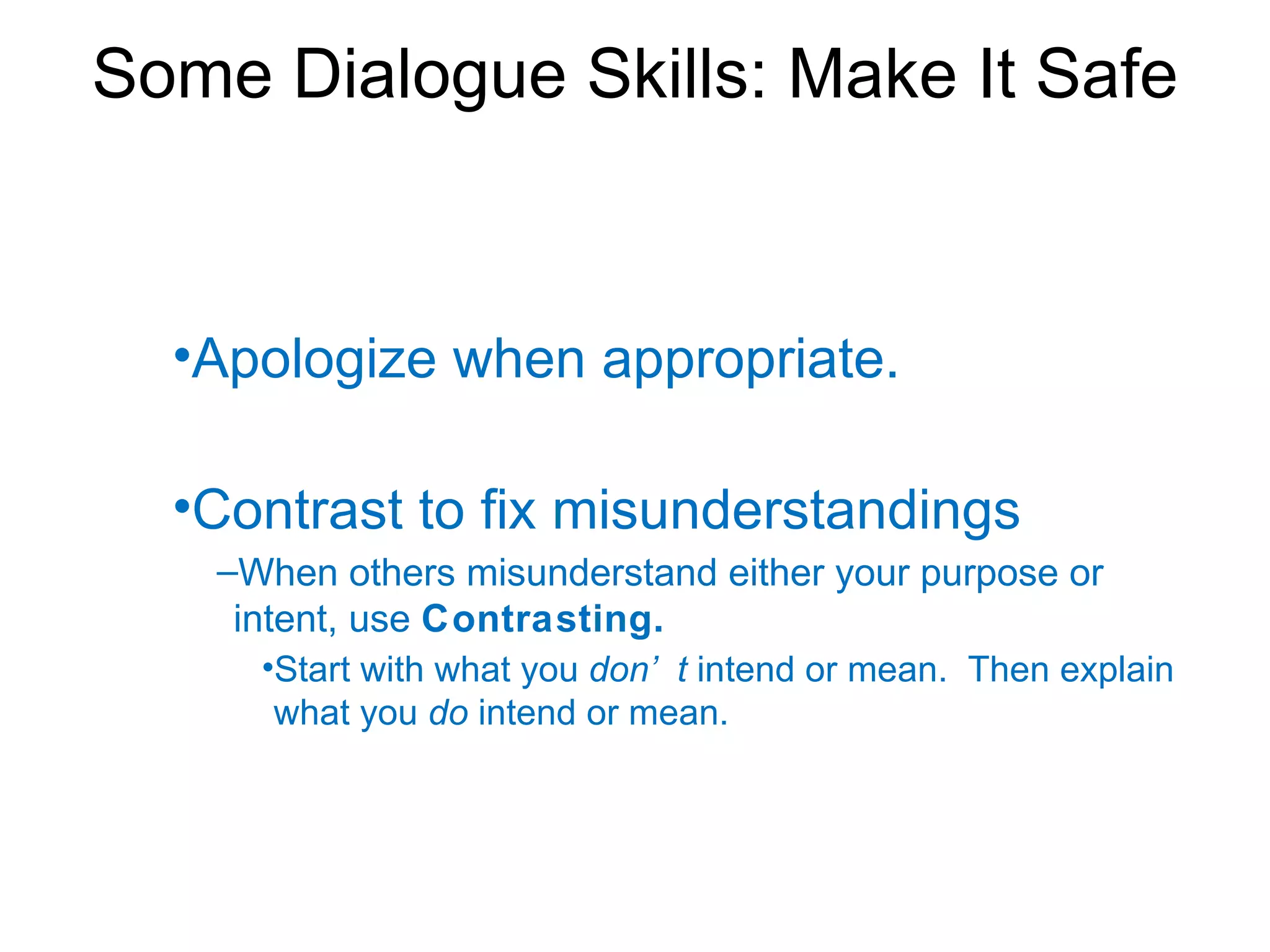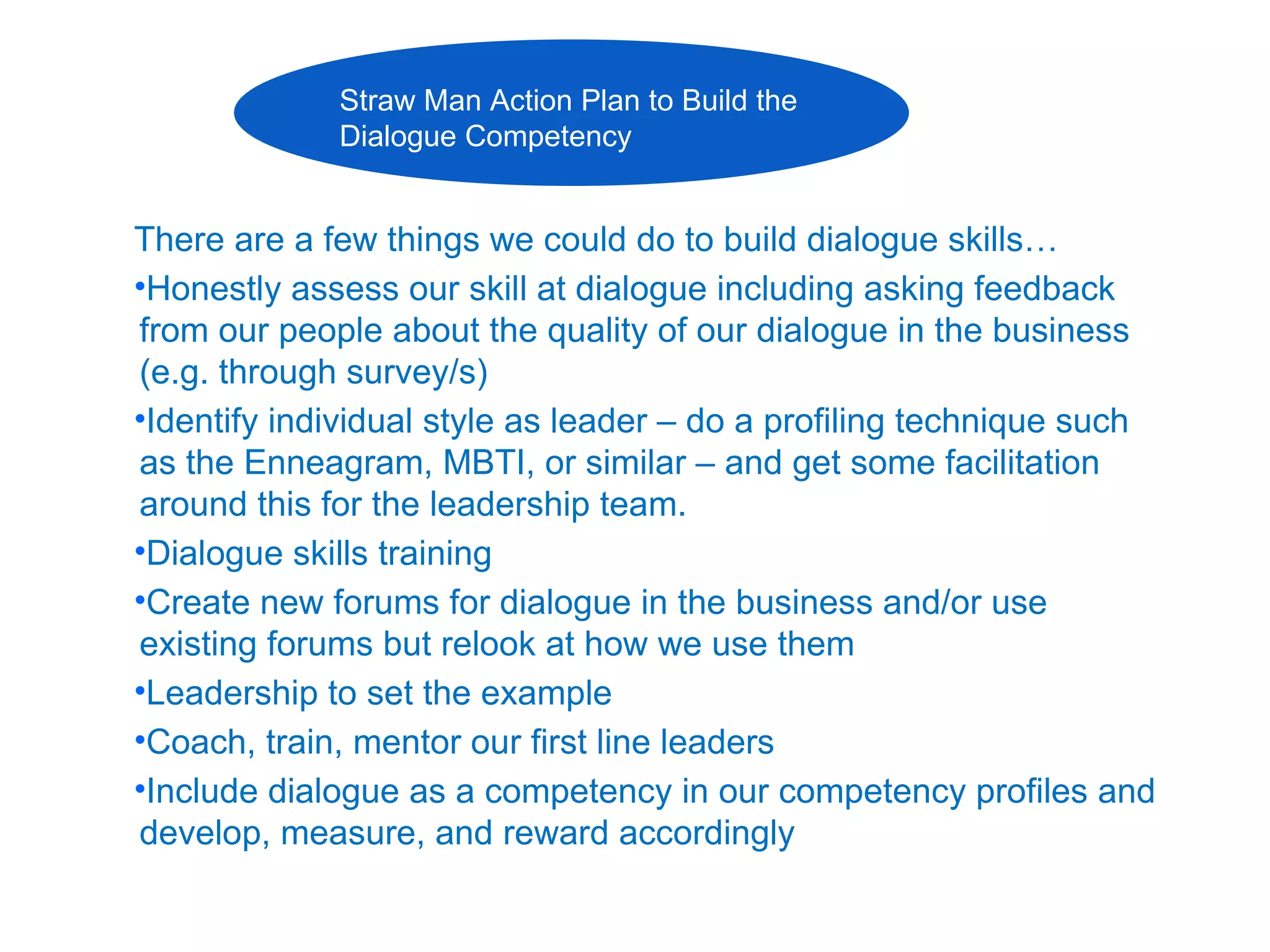The document discusses the importance of robust dialogue in organizations. It makes three key points:
1) Robust dialogue is important for effective decision making, innovation, and competitive advantage as it surfaces reality and different perspectives. It requires open-mindedness, candor over harmony, and informality.
2) Informality is critical for candor and debate, which invites questions and critical thinking. Robust dialogue ends with agreement and accountability.
3) Leaders must model robust dialogue and reward performance to encourage open exchange of ideas instead of political discussions where reality is avoided. Asking questions can help avoid jumping to conclusions.
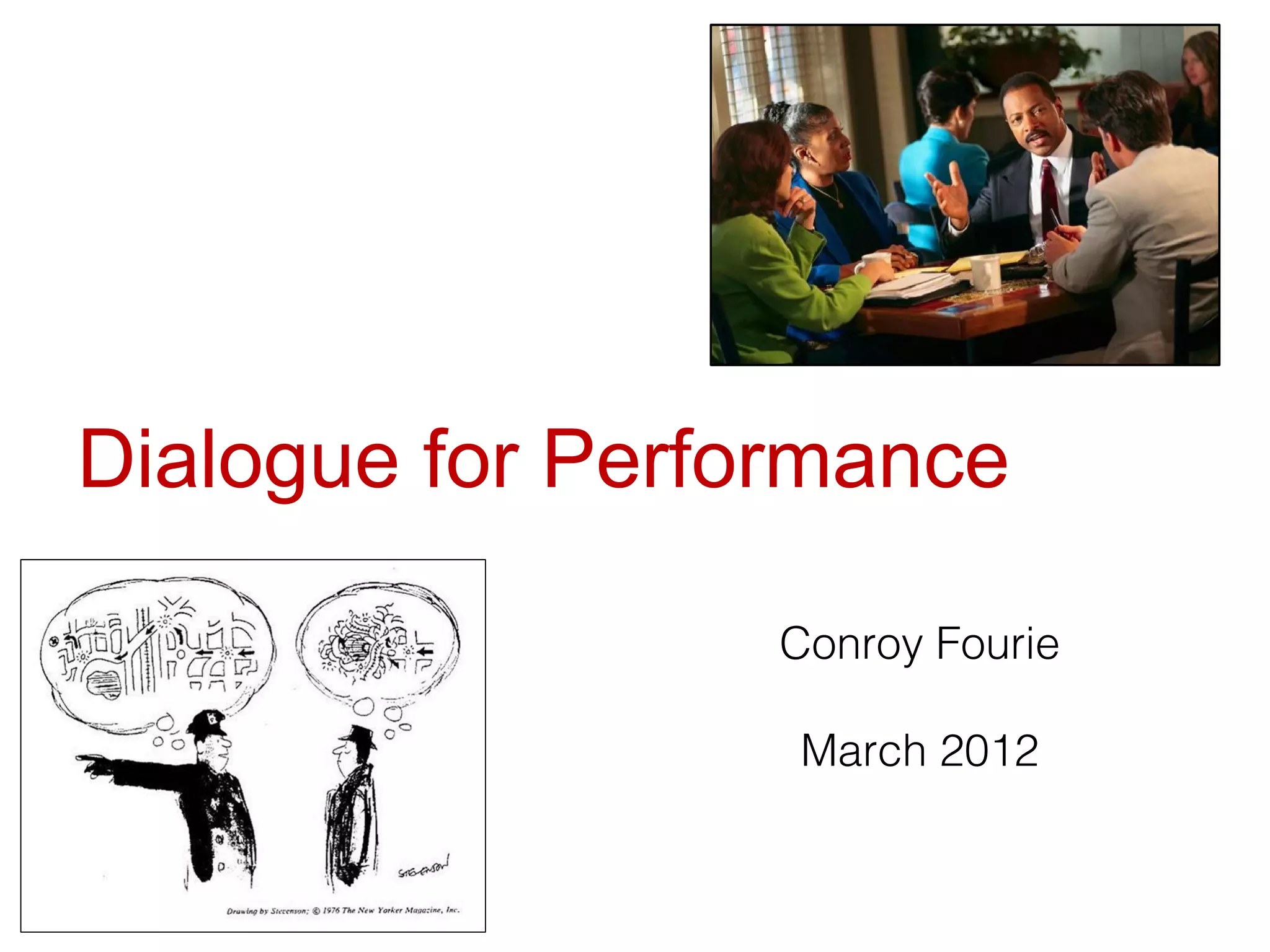

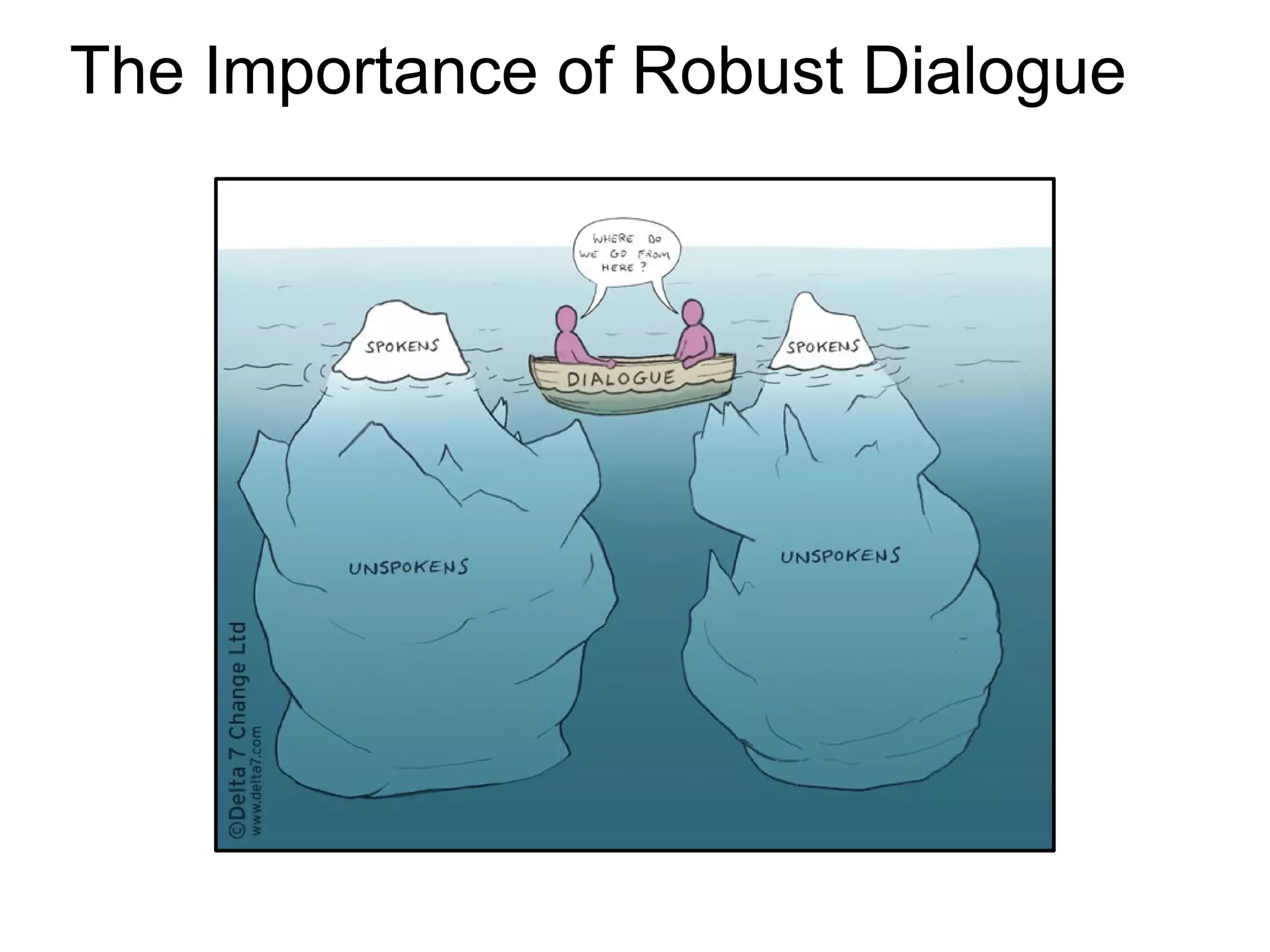
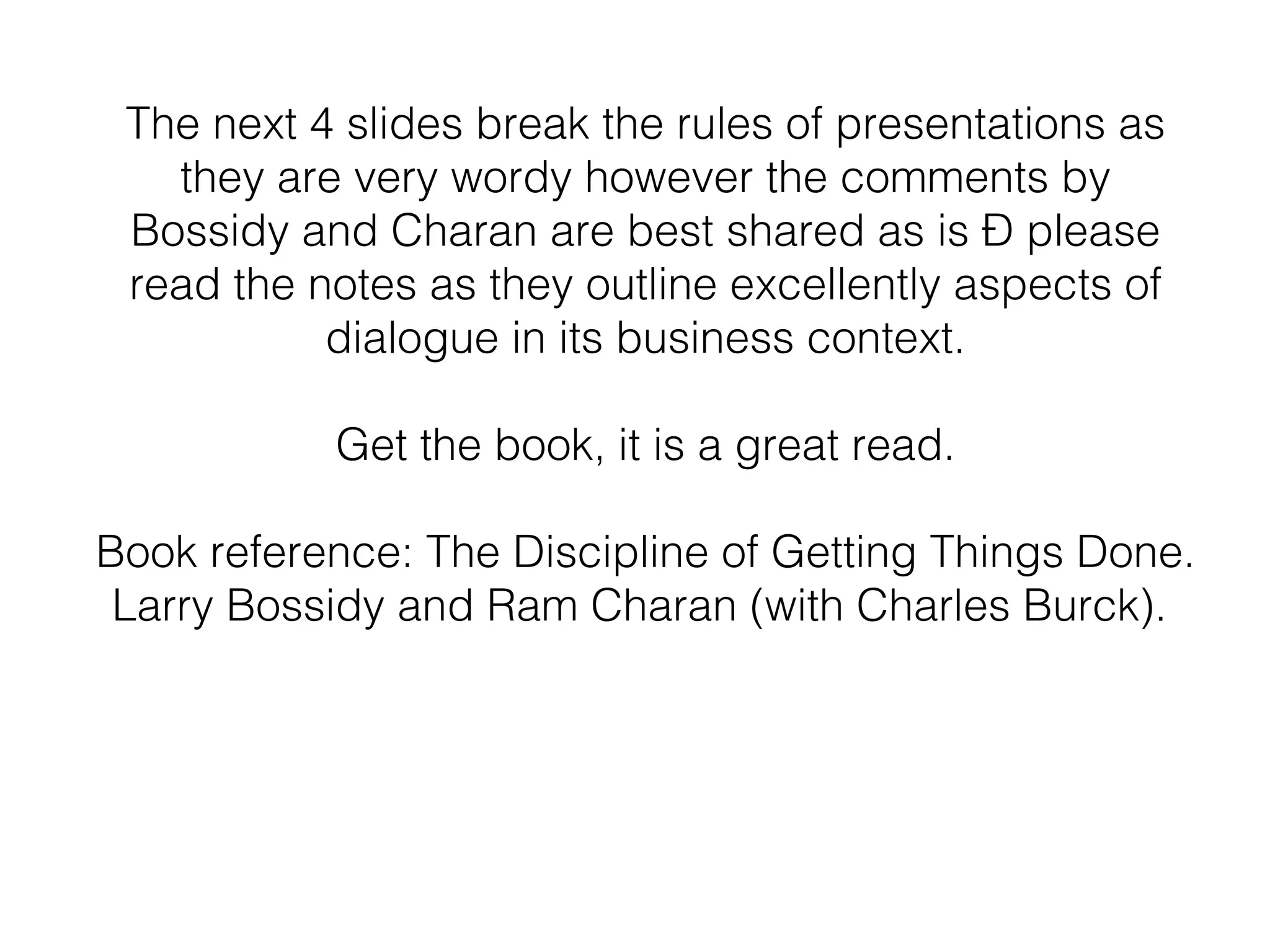
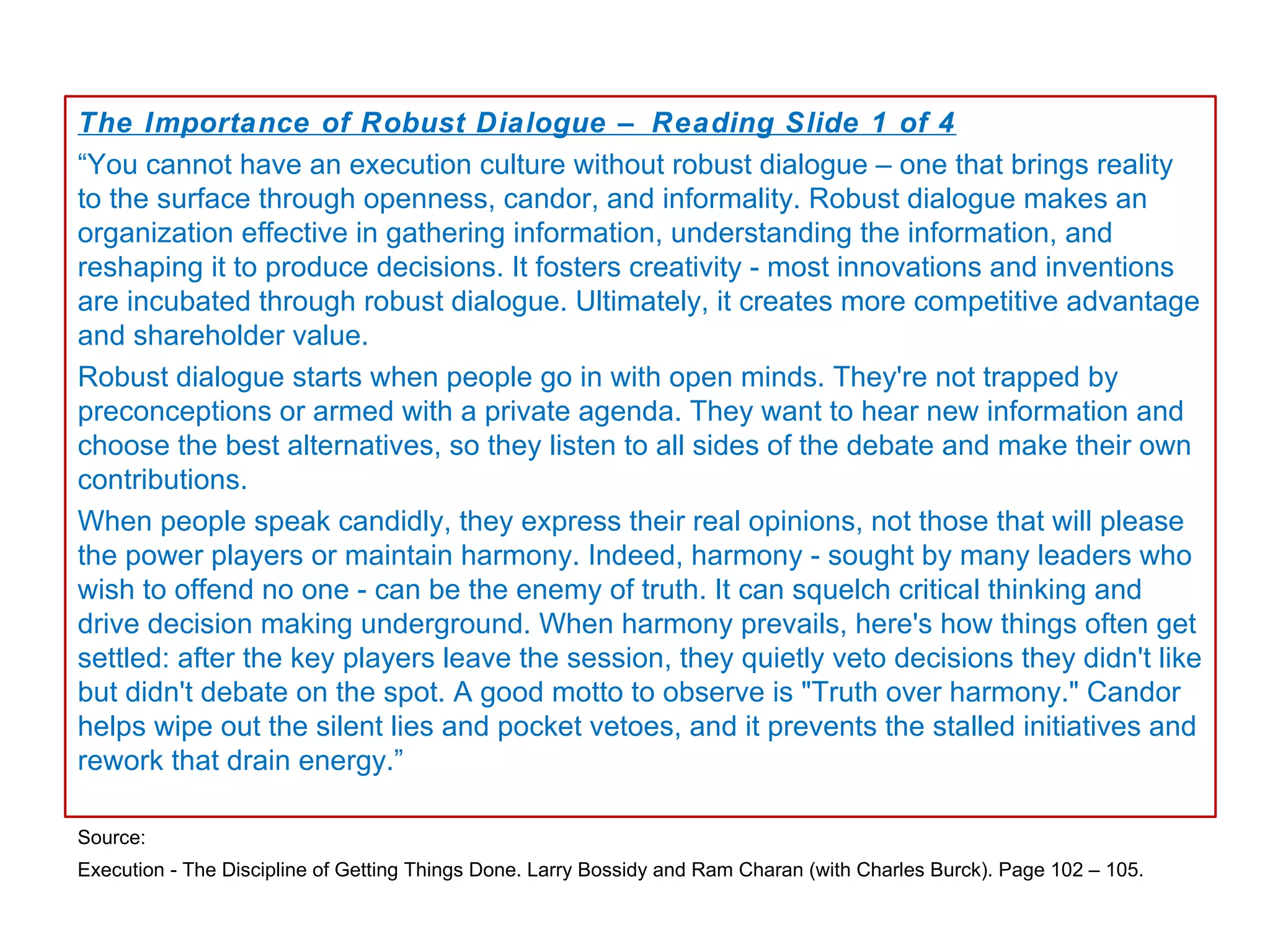






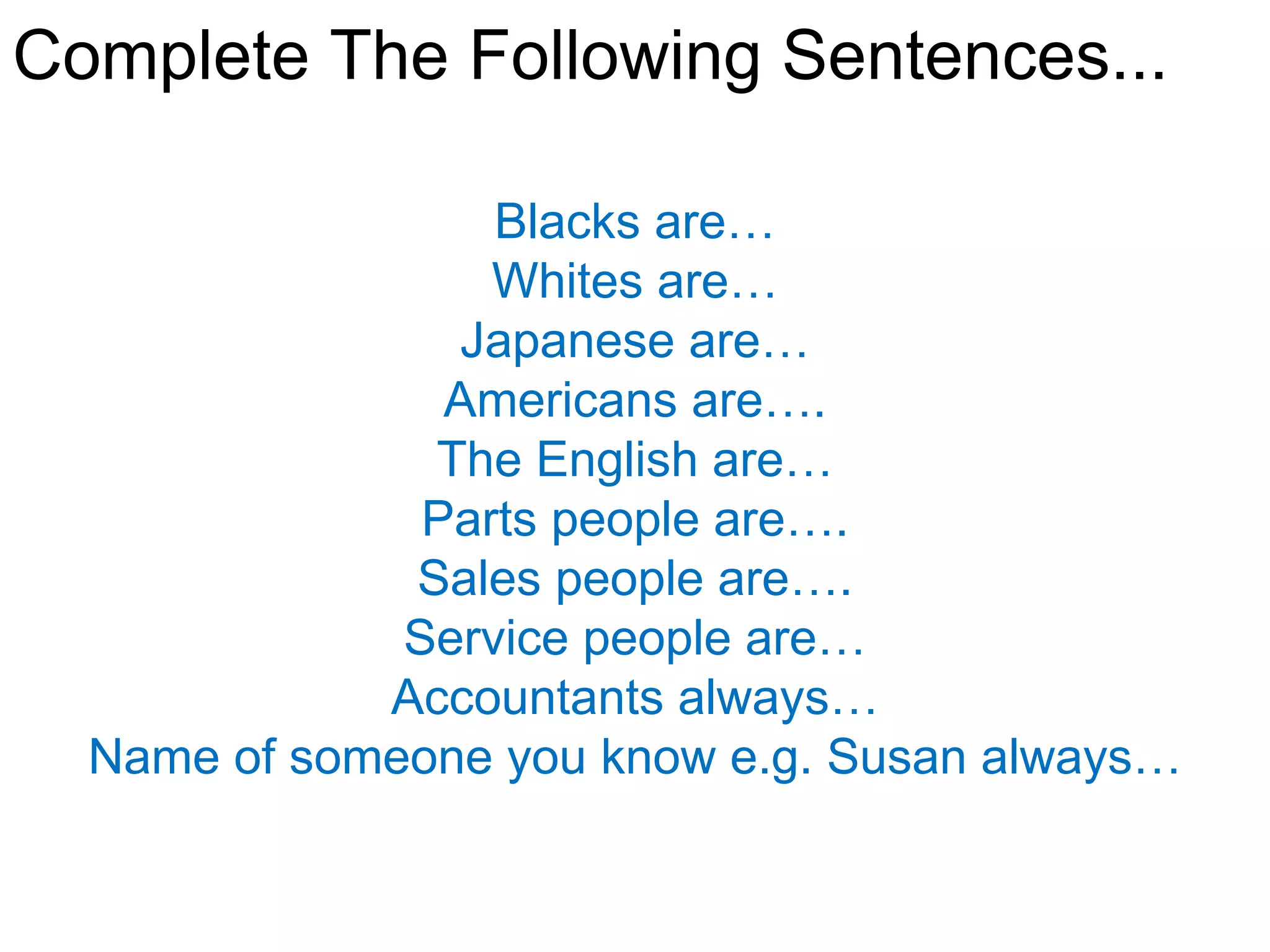

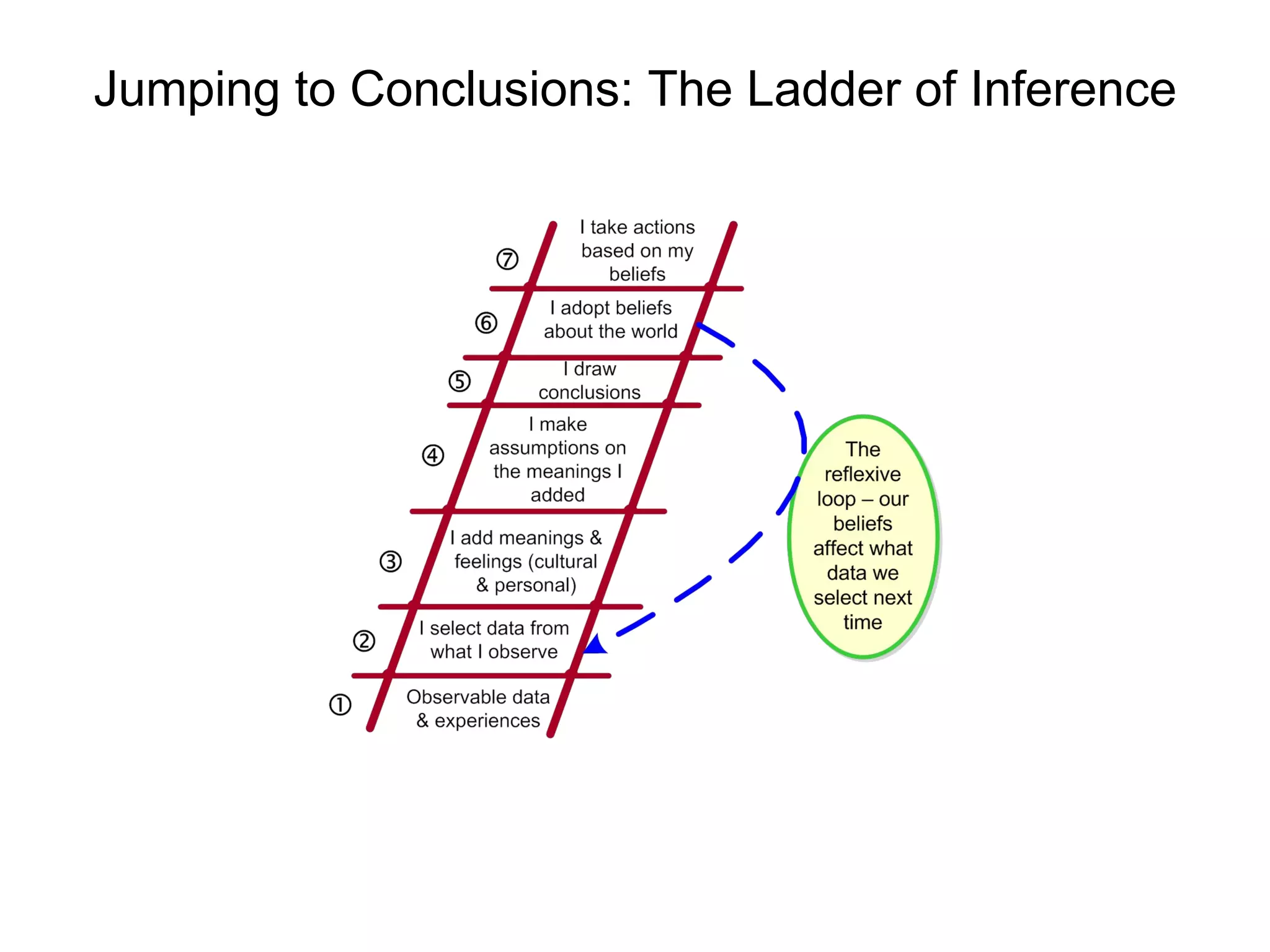
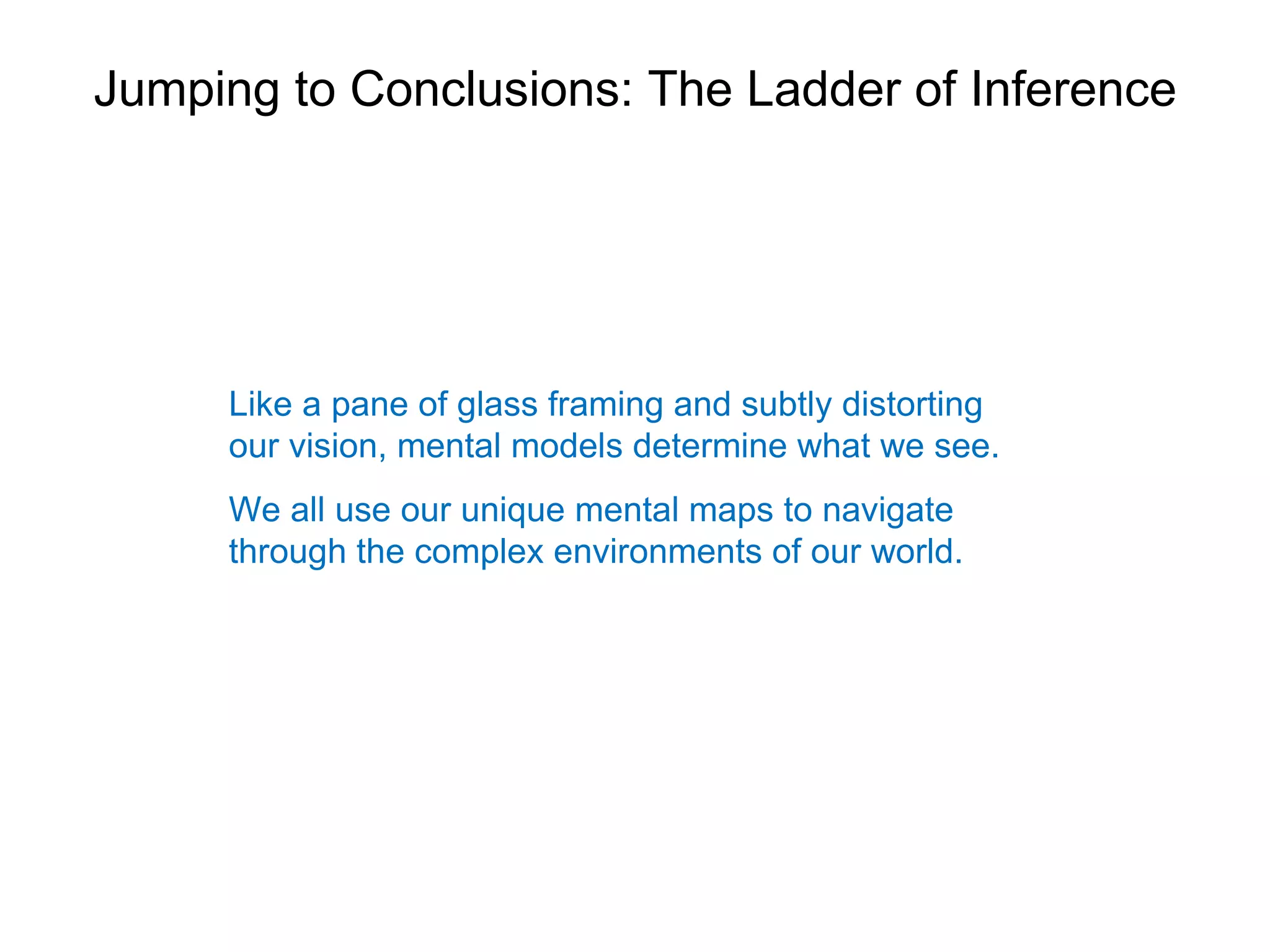
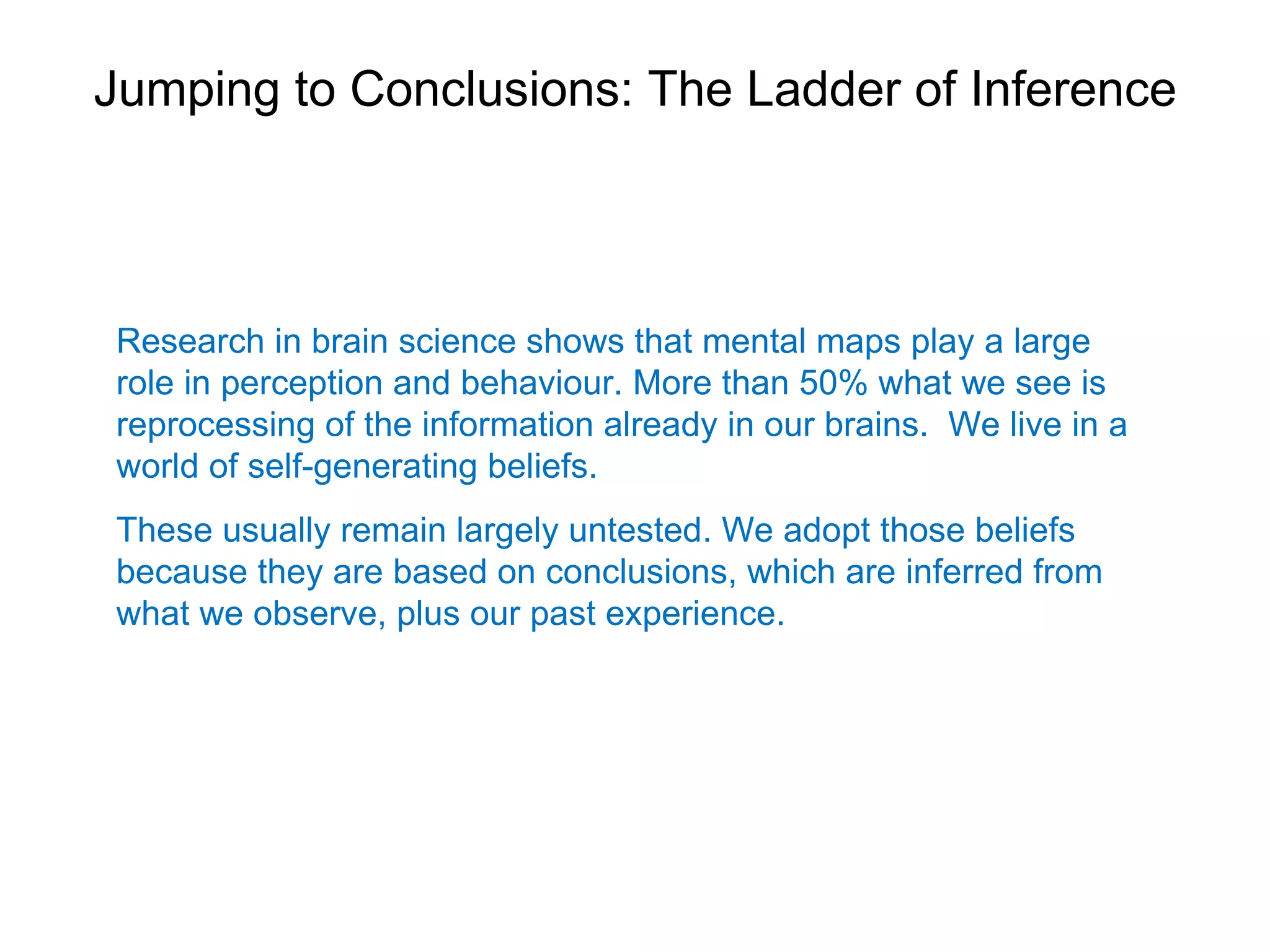

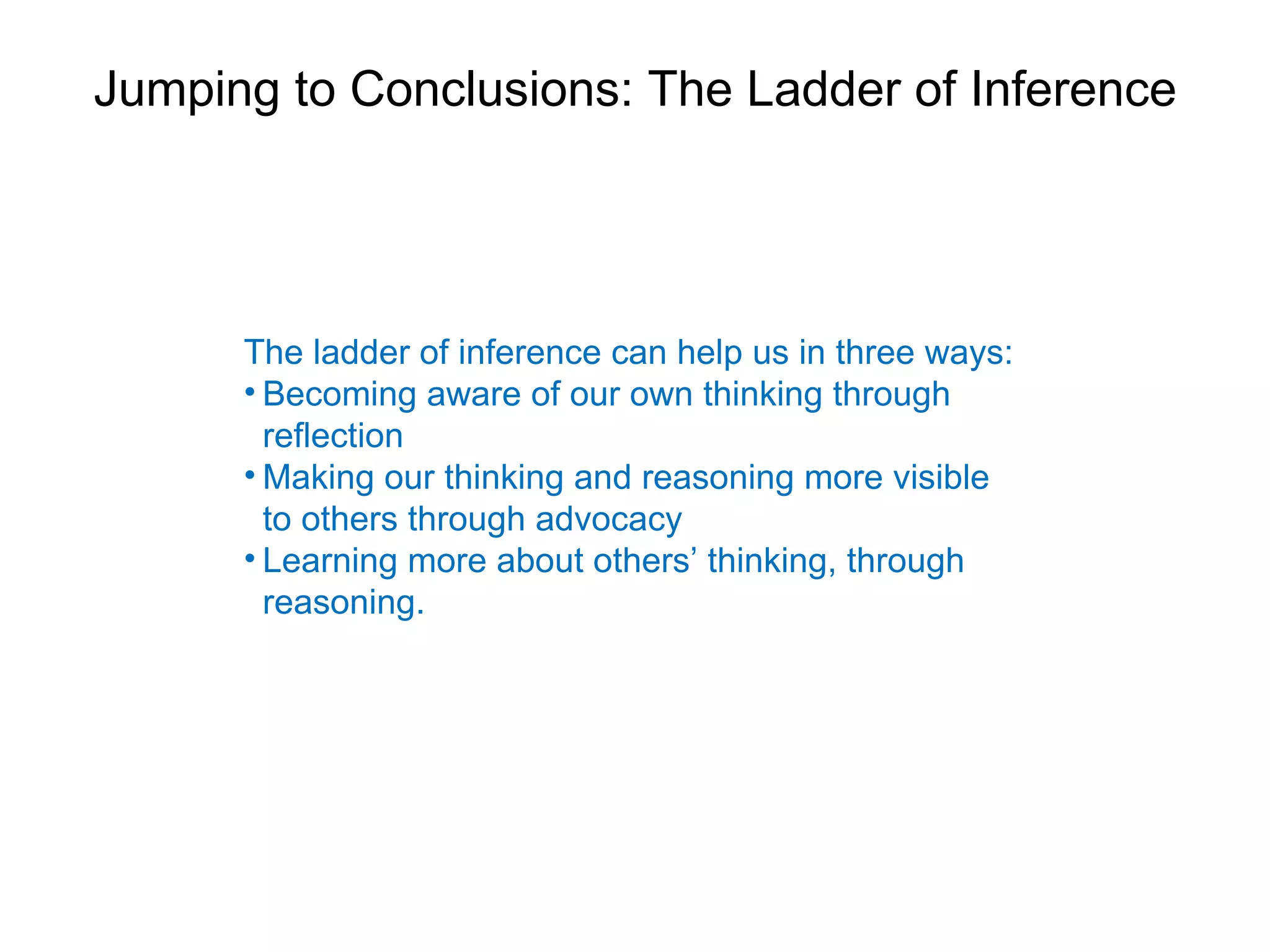
![What Can We Do To Avoid Jumping to Conclusions?
We can clarify a situation by asking questions such as:
• What is the observable data behind that statement?
• Can you run me through that reasoning?
• How did you get from the (observable data) to those
conclusions?
• What assumptions did you make to get there?
• When you said “[your inference]” did you mean “[my
interpretation of it]“?
• You can ask for data through open questions, e.g.; “what
was your reaction to my presentation?”
• You can test assumptions “Is this not what you expected?”:
• Or you can test observable data “I notice you are frowning?”
• Or you can present your move up the ladder “I am moving
up the ladder to these conclusions, maybe we all are. Let’s
share our views. What is the observable data?](https://image.slidesharecdn.com/dialoguess06032012-120306112742-phpapp01/75/Dialogue-for-Organizational-Performance-19-2048.jpg)

